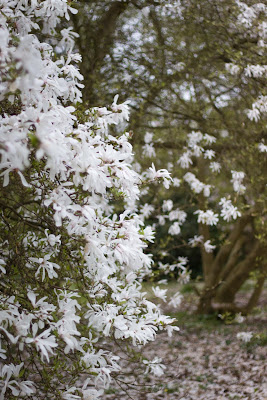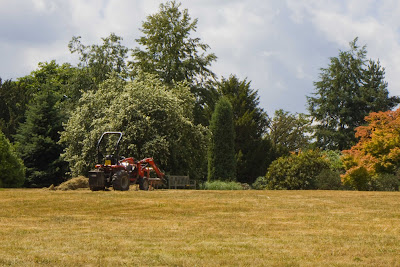In discussion with my tutor about the 'Four Seasons' exercise (Project 15), it was agreed that I could undertake an urban landscape project with the challenge of producing one photograph per season at a chosen inner-city location which would show sufficient seasonal variation.
I decided to choose the canal side location near the International Convention Centre/Symphony Hall in the centre of Birmingham, which is called 'Waters Edge'. This is close to where I live so access was no problem.
For all four shots I chose a low position on the canal side and shot diagonally across the canal to include most of the footbridge connecting the ICC with Brindley Place, a view of the canal under the distant (Broad St) road bridge towards The Mailbox, the 'cafeteria canal boat 'George' and the converted canal-side warehouse that is now the Pitcher and Piano' pub.
Summer
The flowers across the bridge and on the upper right - together with the clouds! - show that this is a summer shot and it was taken in early July using my Tokina wide angle lens. f/13 with a shutter speed of 1/250 seconds at 11mm. ISO 400. Tripod.
Autumn
This shot was taken on a typically misty autumn evening at dusk as people make their way home. I like the reflections of the orange lights in the canal. For this shot I used my Canon 50mm f 1.8 prime lens, f/4.5 and shutter speed of 1/50 secs. ISO 400.
Winter
We have had two consecutive very severe winters when the canals have been frozen for weeks. This January shot shows large chunks of ice broken off by the passage of boats along the canal. Tokina wide-angle lens, f/8.0 and shutter speed of 1/4 secs at 11mm. ISO 400. Tripod.
Spring
Taken early morning on 1st May on a bright sunny day making strong reflections on the water. Plenty of new leaves on the tree on the left and there is even some left-over Royal Wedding bunting on the canal boat on the right! Tokina wide angle lens, f/16 at shutter speed of 1/50 at 11mm. ISO 100. Tripod.
Conclusion
I think that I have demonstrated in this series of photographs that it is possible to show seasonal variations within an urban landscape, if it is chosen carefully.





































